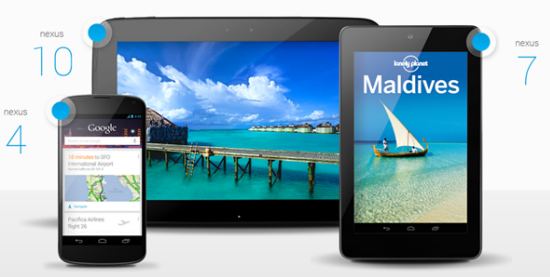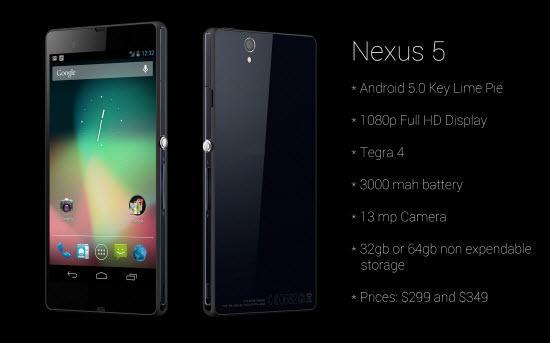
Google has morphed its Nexus line to the point of unrecognition in the past year. The Nexus 4, Nexus 7, and Nexus 10 all have high end devices in their cross hairs. Some consumers have identified with the merit of Google, myself included. They've amassed a plume of developers hell-bent on keeping the open source nature of Android alive.
Yet, it's a very different world in 2013. Nexus needs to identify with a much larger audience, or the brand risks irrelevance on two fronts: availability and pricing.
Nexus phones were never designed to be best sellers, and Google recognizes this. But that hasn't stopped the tech community from comparing Nexuses to high end smartphones like the iPhone 5, and Galaxy S III.
In short, Google's Nexus can only be as successful as they allow it, and in 2013, the Nexus is edging dangerously close to irrelevance.
The following Google has amassed is due in part to Android and its flexibility among manufacturers. OEM's can add their own user interface atop the Android source code of choice. It is the base component in value addition to any manufacturer's custom software. However, a flagship device is only as valuable as the networks it's compatible with, and the Nexus 4's GSM-only mentality is and always has been detrimental to its success.
In an interview with The Verge, Andy Rubin expressed his reasoning behind the Nexus 4's lack of LTE, and, you guessed it, it came down to price. A second radio is technically challenging to implement at a certain price point, and does not offer any guarantee of compatibility with carriers like Sprint and Verizon.
In addition, a second radio is a "tactical issue" which can be broken down to the open access rules associated with most CDMA carriers. For example, Verizon told The Verge "Firmware pushed to devices over the air must be tested and certified" which would essentially neuter a Nexus device in the act by preventing Google from issuing timely software updates. This is likely a determinant in the Nexus 4's omission of LTE support.

It's for this reason that Google has a task at hand in producing a true flagship device in the next Nexus smartphone. A Nexus without LTE cannot be a flagship device in 2013; it's only a matter of time until 3G network support is an afterthought of the mobile industry. If Google could somehow keep the second LTE radio off like the Nexus 4 can embrace one band of T-Mobile's LTE with a simple hack, I'd be more optimistic of the next Nexus. But since 4G LTE is here to stay, Google should surely have 4G LTE radios in tow for a Nexus somewhere down the line.
With the announcement of T-Mobile's 4G LTE network launching, now all carriers offer their top-tier devices with 4G LTE compatibility. Until Google can reshape the Nexus brand to one that does not require the latest software updates, or one that doesn't advertise GSM compatibility, Google has its work cut out to garner attention as a flagship smartphone this year. Here's to hoping we can build the Nexus ourselves.
I could elaborate on how Google and LG have bypassed the logical argument that "it's so cheap, you might as well buy it," but that doesn't ignore their faults along the way. Google and LG's Frankenstein Nexus 4 has been on back order since its initial release last year. Whether they're creating demand by limiting supply, or simply misjudged demand, what it says about the device is that people want it.
Whether by price tag or build quality, the Nexus 4 is just that: a cheap, high quality, Android smartphone from Google. It is no more. There's no specific characteristic that sets it apart from any other smartphone. Google is either wise beyond its years for these reasons, or it's digging the brand's own grave.
It can be said that Google has done all it can to enter the high end smartphone market with their Nexus smartphones. Dating back to the original Nexus One, Google has been anchoring interest at the bow of its Nexus line for years, starting with the smartphone, and now with tablet at stern. Google is essentially the captain of the Android boat, but it's becoming less clear why the Nexus smartphone is out at sea in 2013. Google seems to have lost focus on their niche in Nexus: the flagship smartphone. Consequently, the flagship smartphone has been redefined in 2013.

Google's Nexus devices have never been about bleeding edge specifications, or sales, but rather about the developer's access to the Android source code. It's clear that Google has maintained this position throughout the years with each Nexus device.
But that doesn't deter from the fact that the idea of Nexus used to be more; it's also a partnership of hardware tailored for Google, and ultimately, the consumer, and what the consumer expects in a smartphone is becoming a longer list by the day.
I find it tough to admit that the Nexus boat is less afloat than it was years ago with the original Nexus One. The device was a first for Google, and had the best specifications and a fitting price tag. Roll the reel forward to present day and Google has failed to pitch a flagship device that can go tit-for-tat in a dogfight against the best. The Nexus 4 is only about price.
Our own Aaron Baker has never failed to mention how impeccable a value the Nexus 4 is, and he's on-point. At $299 and $349, the Nexus 4 nearly halves the competition's pricing whilst remaining comparable in build quality and specifications. It's a feat I'd only trust to Google.
But what's next? A $199 Nexus 5 that can only be used by T-Mobile customers? A smartphone that has no camera and costs $50 less? A phone that only supports 4G LTE?
Google, in one hand, your audience is so very limited that you've lost track of what Nexus is: Google's flagship smartphone. On the other hand, you've begun to focus on price as the driving point in sales. But if you continue down this path, where will it end? Does it end? Google, please tailor to the entire market, not your ideal customer.
What say you, Dear Reader? Can Google get the next Nexus right without leaving one cluster of customers out? Is price the best strategy to pitch Google's Nexus brand?
Images via Redmondpie, Autoomobile, and Geeky-Gadgets.